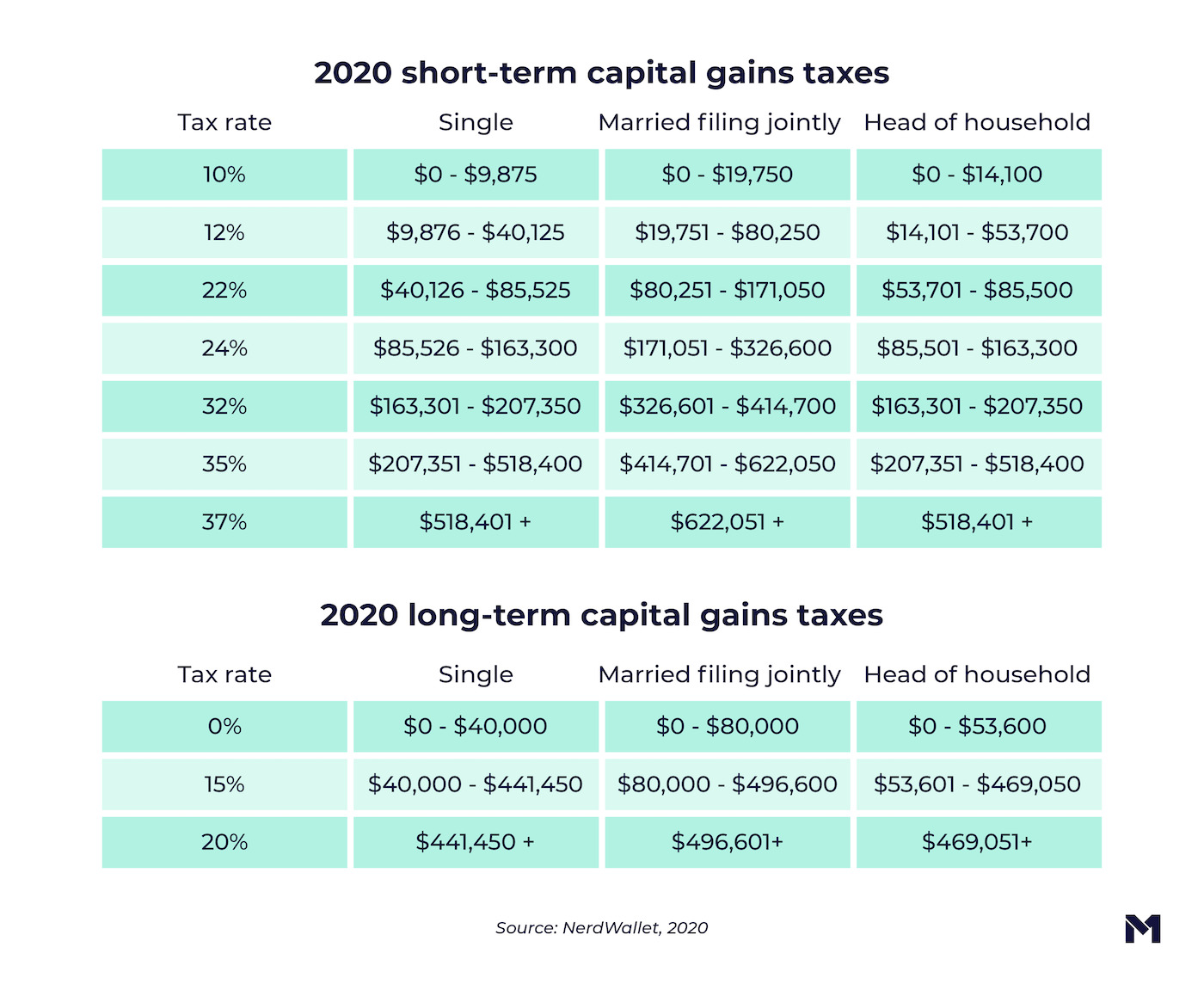7 steps to include in your year-end financial planning

2020 is almost over, we promise. But between year-end deadlines and contribution limits, there’s still time left to make sure you’re not leaving money on the table.
The end of the year is a great time to reflect so you can adjust your financial planning in the new year. Think of it as a check-in on your journey to better financial well-being: not every step will be relevant to you, but a general framework can be helpful as you continue to build your future.
So before you celebrate 2020 coming to an end, here are 7 steps you can include in your year-end financial planning:
1. Start your year-end financial planning with a review
A lot can change in 12 months, including your income, spending, risk tolerance, and the financials of the securities you hold. All these factors can impact your financial planning.
1. Review your spending and adjust for next year.
Review your spending habits over the past 12 months. Did you spend more than intended? Less? Right on the dot?
Whether your income changes in the new year or not, knowing what happened this year can inform your long term goals and financial planning.
2. Review your investment strategy.
Take a holistic look at all your investment accounts, from the taxable accounts to your retirement funds, and revisit your risk tolerance. Make sure your target allocations still match your long-term goals, and that you’re comfortable investing in the securities that make up your portfolio.
3. Review your debt.
There’s high interest debt and there’s lower interest debt. Financial planning mode is a great time to look at the debt you have and see how it’s hurting or supporting your goals.
If you have a lot of high interest debt, like credit cards or student loans, you may consider paying it off with cash you have on hand or with low interest debt — like certain portfolio lines of credit.
2. Automate your finances
We’ve said it once and we’ll say it again: we believe automation is your #1 advantage when it comes to building your financial future. That’s because your finances don’t exist in silos – they’re integrated.
Brian Barnes, our founder and CEO, recently talked about integrated financial planning with Benzinga:
After you get your basic income and expenses sorted out, it’s about prioritizing every dollar. You need to see your spending, investing, saving, and borrowing in one big picture because nothing really works in a silo. It’s really about knowing your risk tolerance and biases, being patient, and continuing to educate yourself.
1. If you already have automation set up, check on your schedules and rules.
The schedules and rules you set up months ago may still work for you, but make sure they match your financial plans for 2021. Reflect on transfer frequency, amount, and which accounts you’re using to move money.
2. Set up smarter automation.
Many personal finance platforms let you automate to a certain extent, often with recurring and scheduled transfers. You can do that on M1 too.
But with Smart Transfers, M1 Plus members can skip waiting for a scheduled date — and automatically move money between their M1 accounts based on rules they build. And if you’re new to M1, check your app for a limited time offer on M1 Plus:

3. Maximize your retirement savings
When we think financial planning for your future, retirement often comes to mind.
While it becomes increasingly important as you get older, retirement planning is critical at any age. So as 2020 ends, check for any year-end retirement-boosting opportunities.
1. Max out your IRA contributions.
Individual retirement accounts (or IRAs) are a great way to build your future. They’re tax-advantaged accounts, meaning you’ll pay fewer taxes than other investment account types.
But you’re only allowed to contribute up to a certain amount annually.
If you’re under 50 years old, you can contribute a maximum of $6,000 to all your Roth and Traditional IRAs. If you’re 50 and over, the maximum contribution is $7,000.
You can wait to max out your traditional IRA or Roth IRA contributions until the Tax Day deadline in April — but you’ll have to designate the year to which they should apply. If you don’t mark 2020, they may count for 2021 if you contribute in the new year.
So, if you’re still under the limit for 2020, you may want to consider maxing out your traditional IRA or Roth IRA before the end of the year.
There are income limitations on your Roth IRA contributions. You can learn more about income limitation rules here: IRS contribution rules.
2. Roll your old 401(k) into an IRA.
We know — a rollover may be the last thing you want to think about as you bake those holiday cookies. But you’re already this far into your year-end financial planning.
So hear us out: holding your retirement savings in different retirement accounts adds an unnecessary layer of complexity to your personal finances. It’s hard to track those accounts, and it can be even harder to develop a strategy that keeps each account in mind.
If you changed jobs in 2020 or have an even older 401(k) laying around, you may want to consider rolling your old 401(k)s into an IRA in your year-end financial planning.
You can learn more about the pros and cons of rolling over a 401(k) in “Should you rollover your 401(k)?”
3. Revisit your employer’s retirement benefits.
Depending on your employer’s benefits, the end of the year may be an opportunity to change your retirement contribution. If your income recently changed or you’re not making the most out of a benefit like a contribution match, now’s the time to consider what you need to do to make that happen.
And if you’re a freelancer, you can use this step in your year-end financial planning to review any changes to your eligibility when it comes to tax-advantaged retirement accounts or contributions.

4. Rebalance your portfolio.
By the time you get to your year-end financial planning, some securities in your portfolio will potentially earn more in returns or dividends while others earn less, altering your overall target allocations.
Translation: your portfolio may be leaning towards too much risk or too little reward, throwing off your long-term plans. Rebalancing can help keep that in check.
If you’ve been regularly contributing to your M1 accounts, you may not need to rebalance now because your portfolio is already leveraging dynamic rebalancing.
But if you haven’t been regularly contributing to your accounts or you’re not using M1, you may consider rebalancing to maintain your target allocations and risk tolerance.
Keep in mind that the time and money spent on rebalancing largely depends on your brokerage. There may be tax consequences that result from the trades you make to rebalance, and some platforms require you to manually calculate your target allocations.
That’s why we’re big fans of automation.
You can learn more about automatic rebalancing in “Everything you need to know about automatic rebalancing.”
5. Get ready for tax season
Tax day is Thursday, April 15, 2021. It may seem far away, but you’ll thank yourself later if you do some of the preparation for it now. We promise there’s a step after this one to look forward to.
1. Consider any potential tax implications.
Have you sold securities this year? Received dividends? Had a big, life-altering, potential-tax-impact change like buying a house or having a baby?
Then your taxes may look different when it’s time to file.
If you’ve sold any securities, the amount you owe will depend on your tax rate, the type of securities you have, and how long you’ve held them:

When it comes to dividends, however, different types of dividends have taxes assessed in different ways. You can learn more in “Taxes on dividends: What you should know.”
And when it comes to those big, life-altering changes with potential tax implications, consider looking into deductions for which you may newly qualify.
Considering potential tax implications ahead of tax season means you’ll be prepared with questions or the research you need to do before filing.
And if you have an accountant, being ready for tax season may just be the best belated holiday gift you can give them.
2. Lean on tax-loss harvesting to help minimize taxes.
We have tax minimization on M1, which means we sell securities in an order that can help reduce the amount owed on taxes.
Many investors also choose to do tax-loss harvesting, a specific strategy that can help minimize taxes owed on capital gains or regular income. While it’s not meant to interfere with your investment strategy, it is another way you can maximize your money.
You can learn more about tax-loss harvesting in this Investopedia article.
3. Anticipate tax documents.
At the end of the year, you probably won’t know which tax documents you’ll receive. Depending on your brokerage, you may receive those documents in January or February.
But that doesn’t mean you can’t spend some time learning where you may find these documents. Year-end financial planning isn’t just about reviewing the last 12 months, it’s about being prepared for the next 12.
Knowing where to find these documents can save you time and energy when it comes time to file.
4. Talk to a certified tax professional.
If you have questions about filing, deductions, or anything else specific to you, it may help to speak with a certified tax professional — if you don’t already have one. Only a certified tax professional can give you tax advice.

6. Consider your family’s financial well-being
Not only are your finances not isolated in silos, but your family’s finances aren’t isolated either.
Whether you’re married, have kids, or support other family members, you can help make sure your financial planning positively impacts their financial well-being.
1. Review your insurance policies.
Health insurance, dental insurance, home insurance, life insurance – you probably have a list of insurance plans like these. Year-end financial planning is a great time to consider whether you’ve had any big changes that might impact your insurance needs.
And if this step makes it into your year-end financial planning, make sure you talk to any family members that share these policies too.
2. Contribute to your kids’ custodial accounts.
You’ve been building your future all year (and hopefully, before that). If you have kids, you can help them build theirs too.
Custodial accounts are free from income, contribution, or withdrawal limits and you can often invest in a variety of assets. This lets you save for their future, whether that means college or a first car.
If you already have one open, consider making some year-end contributions. If you have kids and haven’t yet opened a custodial account, many brokerages and banks offer them (and we will too – coming soon).
3. Share helpful and educational content.
Not everyone reads articles about personal finance like you do! While you can’t give advice unless you’re a financial advisor, you can share the content you’ve found most helpful in your financial planning this year.
For example, we’ve written a lot about long term financial goals, retirement planning, and building plans for your financial future on our blog.
7. Set your 2021 financial goals
This might be an entirely separate exercise for you, but setting your 2021 goals is a great way to keep your financial planning on track.
Your goals will help you prioritize the habits and decisions you make in the next year. And they’re a benchmark in your big picture plan. If you’re just getting started with goals:
- Review your long-term (10+ years) and mid-term goals (up to 10 years).
- Set short-term goals for the year (months to a year or two).
- Prioritize your goals based on needs and wants. A need might be saving for retirement, while a want may be investing to buy a new car.
- Set target dates (or years) for your goals. If you’re saving for retirement, you may already have a year in mind.
- Remember that your progress to date may count, depending on the goal.
Thank you
If you’re reading this, you helped make our 2020 memorable for the right reasons. We’re proud of the milestones we’ve reached this year.
From $1 billion AUM to $2 billion AUM, from launching M1 Spend to launching Smart Transfers, from starting in a new office to going remote and outgrowing it, and two fundraising rounds – it’s been a record-breaking year thanks to you.
We’re building The Finance Super App™️ so you can improve your financial well-being. In 2021, we’ll continue to focus on you, the investor, and deliver the value you deserve out of a financial platform.
- Categories
- Plan



